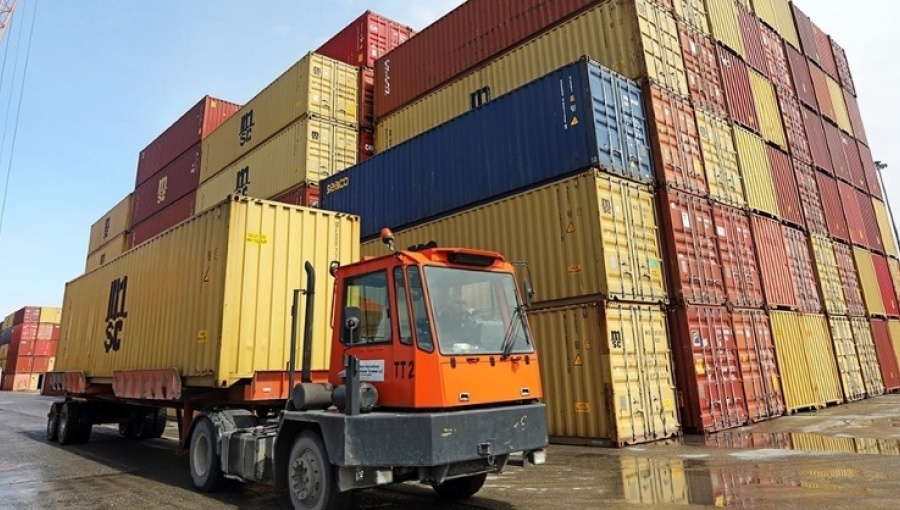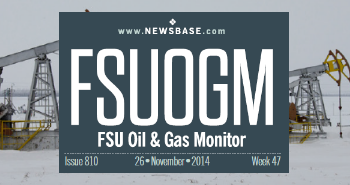Rerouting of Russia trade to add more Caucasus, Central Asia growth in 2024-2025, says Oxford Economics

Growth in Caucasus and Central Asia (CCA) will over 2024-2025 continue to draw on expanded trade with Russia that fills market gaps left by Western sanctions and other restrictions, according to an Oxford Economics research briefing.
“There are several channels by which sanctions and other restrictions imposed on Russia have increased trade flows between it and the CCA region and imports from the EU to the CCA,” notes the analysis, released on June 17 by emerging markets economist Tatiana Orlova.
“These mostly reflect,” the assessment adds, “a re-routing of trade flows to circumvent EU restrictions on the shipment of goods by Russian companies and sanctions against Russian financial institutions. A relatively small component comes from evading sanctions on particular goods.
“Furthermore, some ex-Soviet Union countries are expanding their manufacturing sectors to export more to Russia, thereby exploiting gaps left by the departure of Western companies from the Russian market.”
Two countries, Kazakhstan and Azerbaijan, have significantly boosted their exports to the European bloc by substituting some of the EU's hydrocarbon imports from Russia, points out the analysis, adding: “With no end to Russia's war in Ukraine in sight, we expect this trend to continue in 2025-2026, bolstering their export revenues.”
The report recaps that, although not all goods exports to Russia have been banned under Western restrictions applied since the February 2022 Russian invasion of Ukraine, sanctions imposed on services exports have made exporting goods directly to Russia costlier and often impractical. CCA exports have thus benefitted from trade intermediation and filling new niches.
The invasion prompted a sharp drop in exports from the US, EU, UK, Japan and other countries that joined sanctions against Russia. But ex-Soviet Union countries in the CCA did not join the sanctions and saw sharp expansions in the US-dollar volume of goods exports to Russia in 2022. In Armenia's case, shipments tripled, while in Uzbekistan they leapt by 52% y/y and in Kazakhstan by 30% y/y, says the report.
In most of the countries that made gains, goods export values continued to expand year on year in 2023 despite the very high base, the briefing observes, adding: “Georgia was the only exception, but it benefitted from much higher services revenues from booming Russian tourism. The sudden surge in exports from these countries was accompanied by an increase in imports from countries that banned exports of many categories of goods to Russia following its invasion of Ukraine. The ban included semiconductors, dualuse goods, cars, certain chemicals, electronics, luxury goods, equipment used in the mining industry, and advanced technologies.”
Notably, the US-dollar value of Armenia's goods imports from five large EU economies (Germany, France, Italy, Poland, and the Netherlands) moved up 55% y/y in 2022 and 35% y/y in 2023. Kazakhstan's goods imports from the EU, meanwhile, increased by 35% y/y in 2022 and 37% y/y in 2023, with Georgia registering gains of a similar magnitude.
Uzbekistan's official statistics, however, still reflect a near-zero trade turnover with the EU.
The report mentions how detailed research by Bloomberg economists into the composition of Kazakhstan’s exports to Russia found that only 7% of the country’s 2023 exports expansion could be linked to sanctioned goods.
“Also,” the report says, “this channel is insufficient to explain the rise in trade flows. For example, in Armenia, combined imports from the EU, US, and UK increased by $0.6bn in each of 2022 and 2023. Meanwhile, exports to Russia rose by $1.7bn and $0.9bn. A second channel that may help to explain part of the difference is that CCA countries are exporting more of the goods they produce themselves.”
The European Bank for Reconstruction and Development (EBRD) has found that CCA countries used the exit of Western brands from the Russian market as an opportunity to grow their manufacturing sectors.
An EBRD report, says the Oxford Economics analysis, considers the example of Kyrgyzstan, “whose textile sector expanded by 42% in 2022, with textile exports accounting for 45% of total exports to Russia. As we forecast the Russian economy will expand above potential in 2024 at 3.6%, we see further room for growth in manufacturing exports from the CCA to Russia”.
While CCA exports to Russia experienced a boom, imports from Russia to the region were subject to more diverse trends. All of the Caucasus countries (Armenia, Georgia and Azerbaijan) saw steep rises in Russia import volumes in 2022, and in the case of Armenia, a similar increase also occurred in 2023, says the report. But, it adds, Kazakhstan's imports from Russia barely grew in 2022 and shrunk 9% in 2023.
Despite its fast-expanding economy, Uzbekistan's import growth was relatively moderate at 13% in 2022 and 6% in 2023. The cost of transporting goods from the EU to the landlocked, remote country “must be too high to make it worthwhile, especially if cheaper alternatives may be sourced from China”, suggests the report.
Another consideration raised by the briefing is that, to some extent, the buoyancy of Russia imports to the Caucasus may be pinned on booming domestic demand boosted by Russian immigration.
“Another factor is the relative strength of the region's currencies. But the magnitude of the increases suggests that something else has been going on. The most likely explanation is the rerouting of goods trade,” the report surmises.
Interestingly, Kazakhstan stands out as the only economy in the region that has significantly upped its exports to China in the past two years. Reasons include transport, logistics and border infrastructure improvements of recent years, according to the analysis.
China, on the other hand, has successfully exported more to the fast-growing economies of the region. Its exports to Armenia, Georgia and Uzbekistan grew by double-digit rates in 2022-23.

In terms of the US-dollar value of Turkish exports to these five CCA economies, it soared in 2022 when they received a large wave of Russian migrants.
In a final note, Oxford Economics says in the briefing: “We see a potential for rapid growth in trade and investment in the region in the coming years if Armenia and Azerbaijan succeed in signing a peace treaty following the end of the Nagorno-Karabakh conflict last autumn. There have been hopeful signs recently, with Armenia's consent to hand over four disputed villages to Azerbaijan, opening the door to border delimitation.
“If the treaty is signed, it will also unlock FDI flows into the development of infrastructure (ports, railways) related to the Trans-Caspian international transport route (the Middle Corridor) – the shortest land route linking China with Europe. Countries on the shores of the Caspian and Black Seas – Kazakhstan, Azerbaijan, Georgia, and Turkey – stand to benefit.”











Follow us online